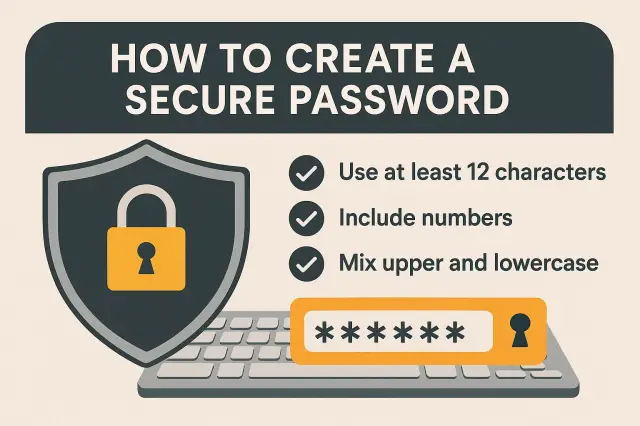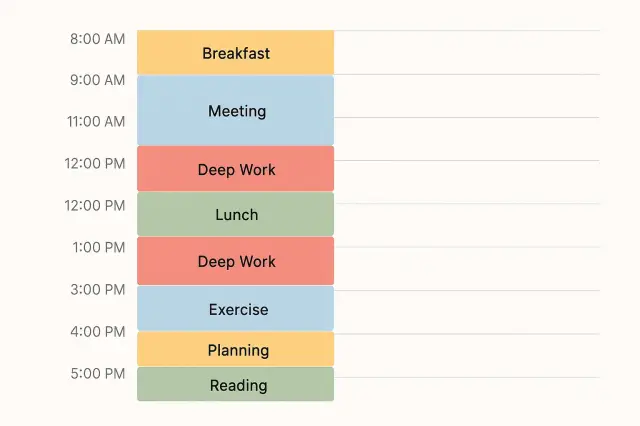Creating a secure password is one of the most essential steps you can take to protect your online identity. Yet, many people still use weak passwords like "123456" or "password"—leaving themselves vulnerable to hacks, identity theft, and data breaches.
In this comprehensive guide, you'll learn how to create a strong, secure password, why it matters, and how to use tools like the Password Generator, Encryption Tool, and Hash Generator to boost your online security.
Why Password Security Is So Important
Your password is the first—and often only—line of defense against unauthorized access to your personal and financial information. Weak passwords can be cracked in seconds using brute-force or dictionary attacks. A secure password, on the other hand, can keep even sophisticated hackers out of your accounts.
Here are just a few reasons why secure passwords matter:
- Prevent unauthorized access to your emails, bank accounts, and cloud data.
- Protect sensitive company data if you’re in a professional environment.
- Avoid becoming a victim of ransomware or phishing attacks.
What Makes a Password Secure?
A secure password isn’t just "long." It also has specific characteristics that make it difficult for attackers to guess or crack.
Characteristics of a Strong Password:
- Length: At least 12–16 characters.
- Complexity: Includes uppercase and lowercase letters, numbers, and symbols.
- Unpredictability: Avoids dictionary words, names, or personal info like birthdates.
- Uniqueness: Never reused across multiple sites.
Need help crafting a secure password? Try our Password Generator — it’s quick, free, and highly customizable.
How to Create a Secure Password (Step-by-Step)
Follow these practical steps to create your own bulletproof password:
- Start with length: Aim for a minimum of 16 characters.
- Use a passphrase: Combine unrelated words with symbols (e.g., “Blue_Tiger#Salsa2025”).
- Mix character types: Use numbers, symbols, uppercase and lowercase letters.
- Avoid personal info: Never use names, birthdays, or common words.
- Check for strength: Use tools like the Password Generator to test your password's strength and entropy.
What You Should Never Do with Passwords
- Don't reuse passwords across platforms.
- Don’t use obvious substitutions like "pa$$word"—hackers know those tricks.
- Don’t store passwords in plain text files.
- Don’t share passwords through email or chat.
How Encryption and Hashing Keep Passwords Safe
Even if you create a strong password, how it is stored matters just as much. Systems typically either encrypt or hash your password to protect it from being stolen or read.
Encryption
Encryption turns your password into unreadable text using a secret key. If intercepted, it can only be reversed (decrypted) with the correct key. You can experiment with different encryption techniques using our Encryption Tool.
Hashing
Hashing converts your password into a fixed-length string, which cannot be reversed. It’s commonly used in databases. Try the Hash Generator to see how your password would look when hashed using SHA-256 or MD5.
Password Storage Tips
Once you’ve created a strong password, it’s just as important to store it securely. Here are a few tips:
- Use a reputable password manager like Bitwarden or 1Password.
- Enable biometrics (fingerprint, face ID) where possible.
- Backup your password vault with encryption.
How Often Should You Change Your Password?
If you use a strong, unique password and no suspicious activity is detected, changing it every 6–12 months is usually sufficient. However, you should update your password immediately if:
- You’ve been involved in a data breach.
- You suspect someone has accessed your account.
- You shared your password with someone else.
Examples of Weak vs. Strong Passwords
| Weak Password | Strong Password |
|---|---|
| password123 | B3@ch_T0wN2025! |
| qwerty | Mango#Truck*98! |
| iloveyou | L!ghtB1zz_Storm@44 |
Bonus: Use Two-Factor Authentication (2FA)
Strong passwords are powerful, but adding a second layer of protection like 2FA can drastically reduce your risk. Even if someone gets your password, they won’t be able to log in without a second code or device verification.
Common Myths About Passwords
- Myth: “I’m not important enough to be hacked.”
Reality: Automated bots don’t care who you are—they target everyone. - Myth: “Changing passwords frequently keeps me safe.”
Reality: It’s more important to use unique, strong passwords than to rotate them often. - Myth: “Saving passwords in browsers is safe.”
Reality: Browsers can be exploited. Use a dedicated password manager.
Final Thoughts: Stay Safe with Smarter Passwords
Creating a secure password doesn’t have to be complicated. With the right tools and mindset, you can significantly reduce your risk of cyberattacks. Always choose complexity over convenience—and make full use of tools like our Password Generator, Encryption Tool, and Hash Generator.
Now’s the time to level up your digital safety. Start creating smarter, stronger passwords today!




